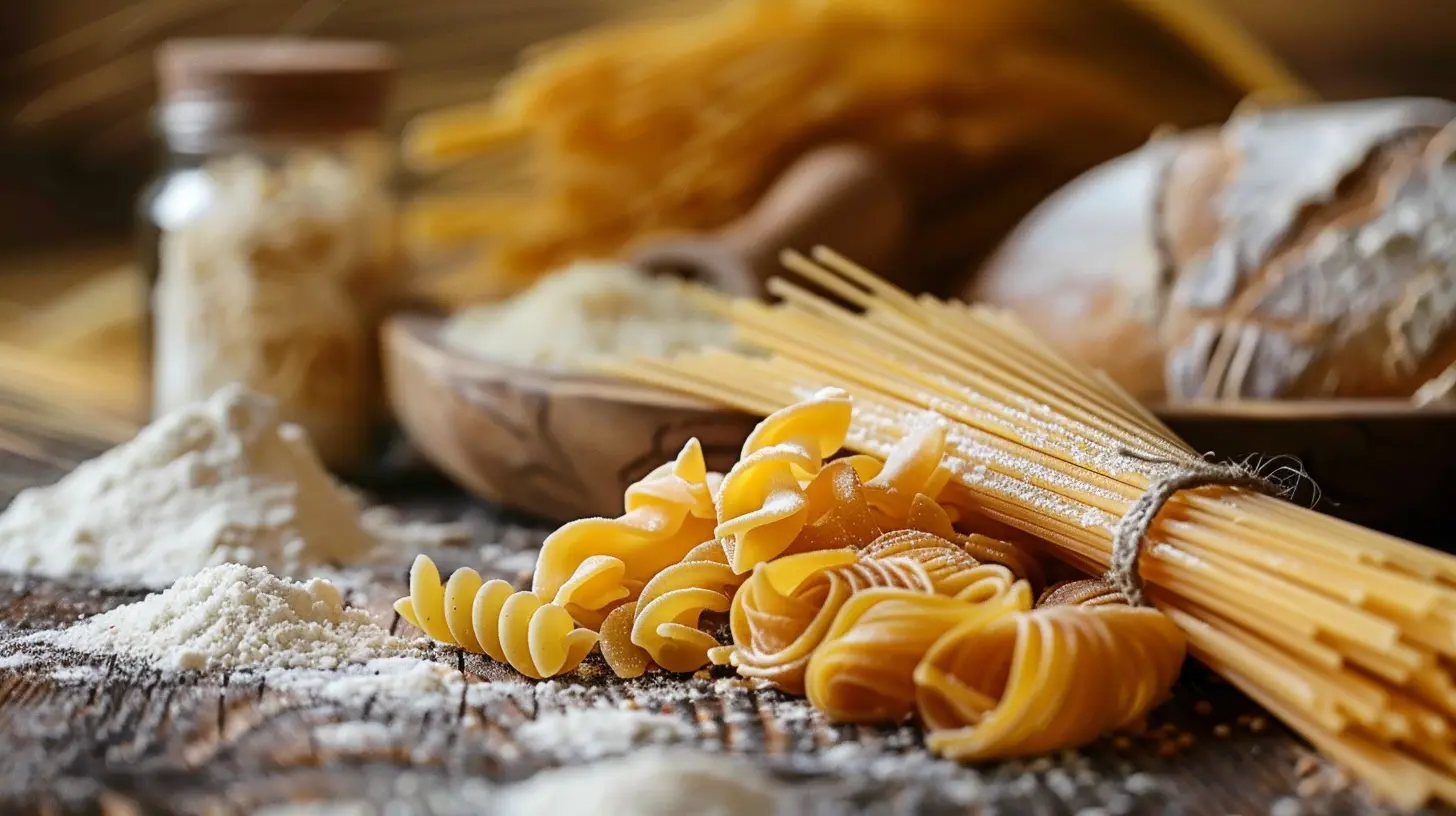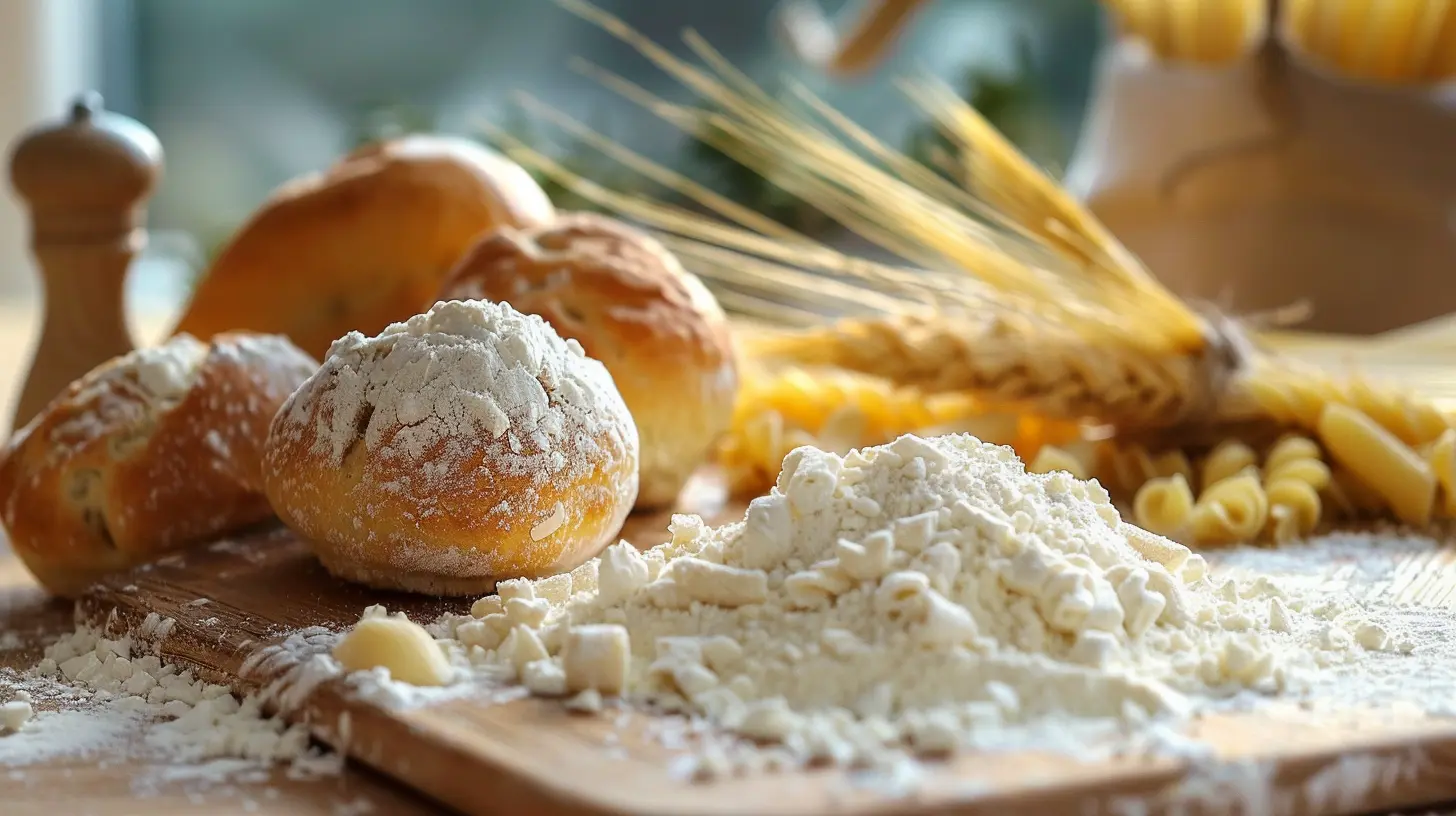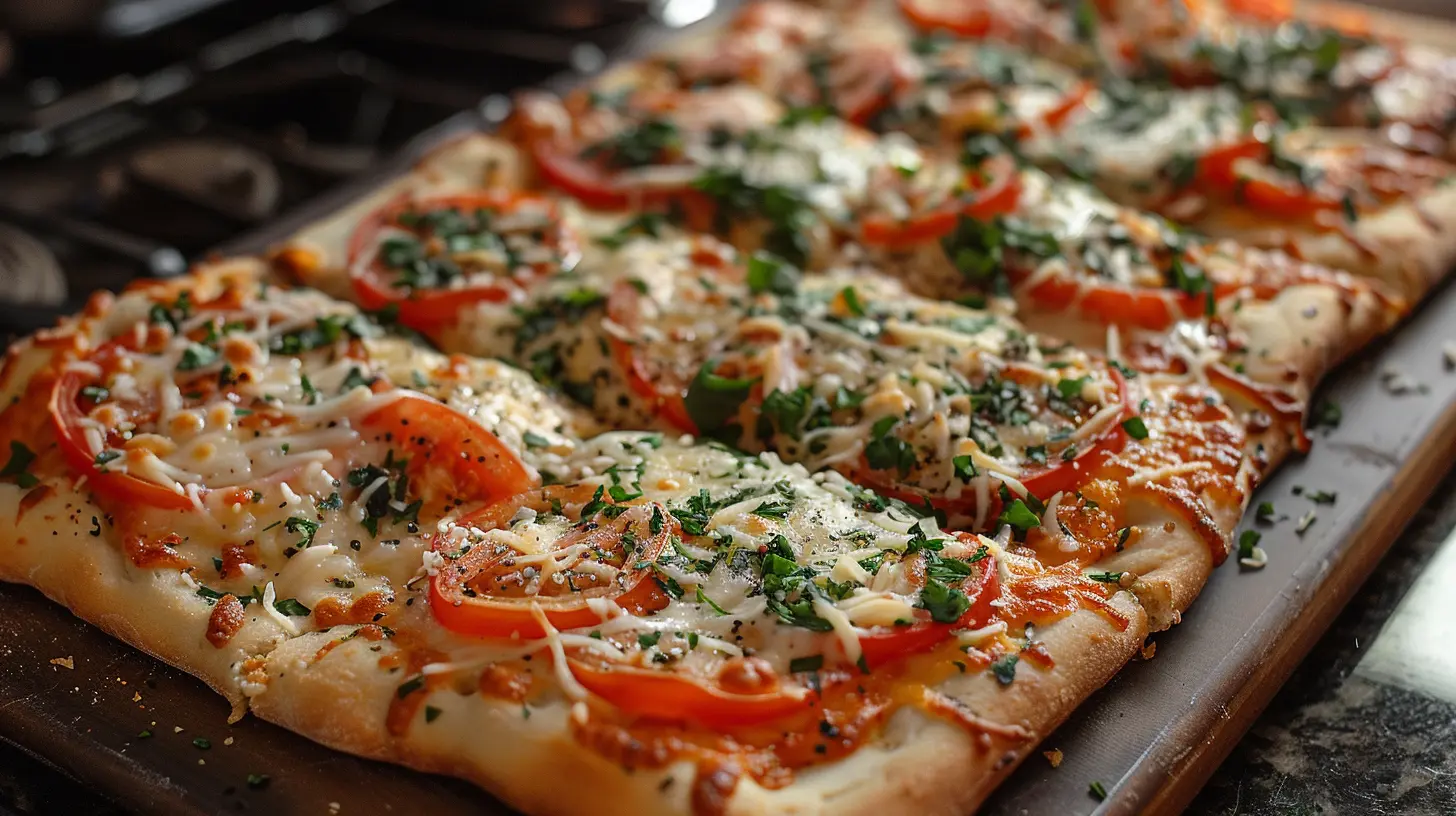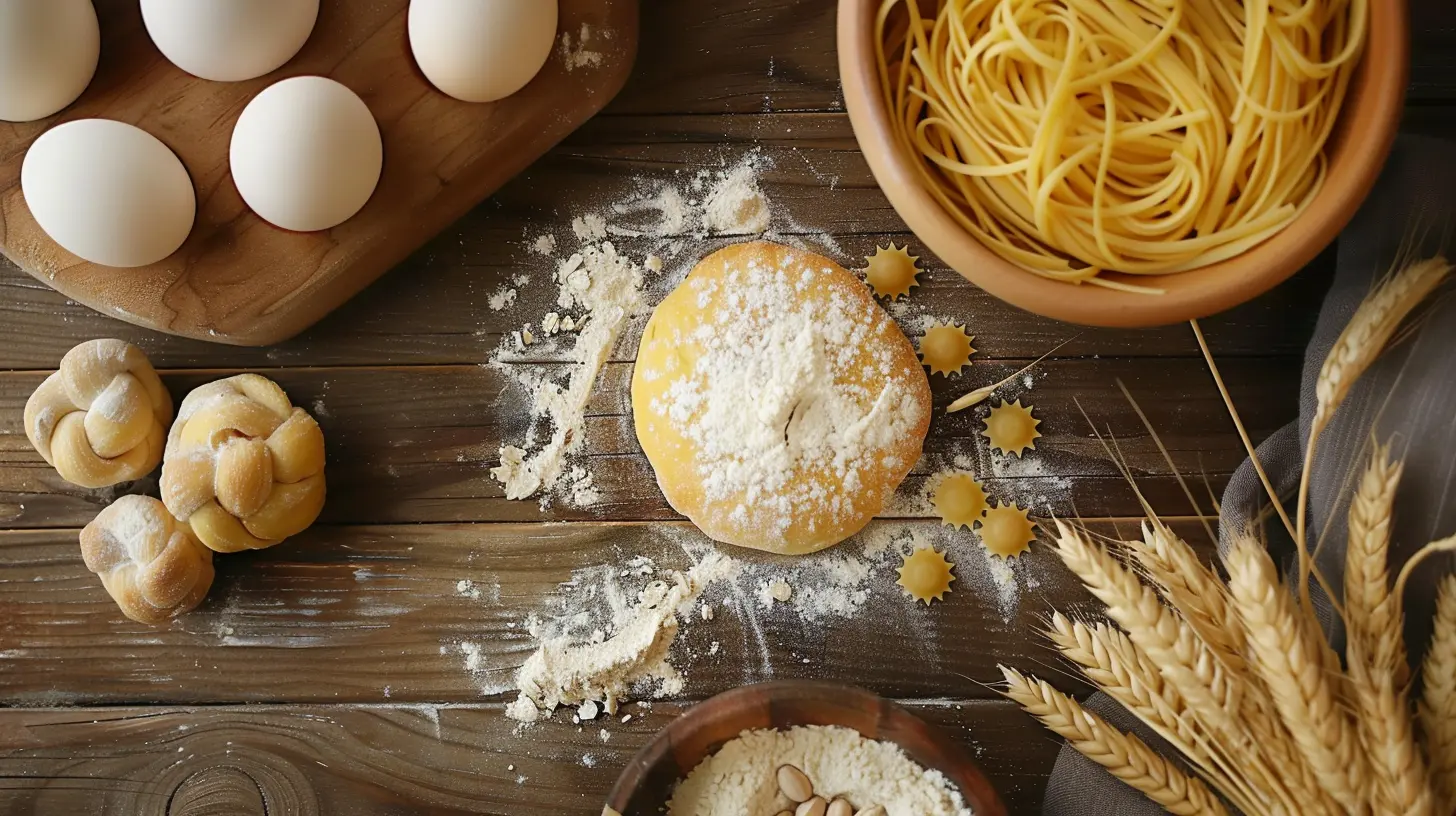Gluten-Free Pizza, Pasta, and Bread: Homemade Tips and Tricks
26 May 2025
Are you tired of store-bought gluten-free products that taste like cardboard? Yeah, me too! Going gluten-free doesn’t mean you have to give up on taste, texture, or your love for carbs. Whether you’re gluten-intolerant, have celiac disease, or just want to experiment with healthier alternatives, this guide will help you master homemade gluten-free pizza, pasta, and bread.
Trust me, with the right ingredients and a few tricks, you can make gluten-free dishes so good even gluten lovers will be begging for seconds. Ready? Let’s get baking (and boiling)! 
Gluten-Free Pizza: Crispy, Chewy, and Oh-So-Good
Let’s be real—bad gluten-free pizza crust is a crime against humanity. It crumbles, lacks the chew factor, and tastes like sawdust. But fear not! With the right ingredients and a little patience, you can make restaurant-quality gluten-free pizza at home.The Secret to a Perfect Gluten-Free Pizza Crust
The key to a stellar gluten-free pizza crust lies in the flour blend. Don’t just grab any random gluten-free flour and hope for the best. Here’s what you need:- A blend of flours: A mix of rice flour, tapioca flour, and almond flour gives the best flavor and texture.
- Xanthan gum or psyllium husk: Since gluten gives dough elasticity, you need something to replace it. These help hold everything together.
- Olive oil: Adds richness and helps with browning.
- Apple cider vinegar: Helps with the dough’s elasticity and flavor.
- Yeast: Because who doesn’t love a slightly chewy, airy crust?
Step-By-Step: Making Gluten-Free Pizza Dough
1. Activate the yeast – Warm water, a little sugar, and yeast. Let it foam up.2. Mix your dry ingredients – Your flour blend, xanthan gum, and salt should be well combined.
3. Combine wet and dry – Mix the yeast, olive oil, and apple cider vinegar into the dry ingredients.
4. Let it rest – Unlike regular dough, gluten-free dough doesn’t require traditional kneading, but it benefits from resting to let the flours absorb liquid.
5. Shape and bake – Spread it out (not roll!) onto a parchment-lined pan and pre-bake for 10 minutes before adding toppings.
Pro Tips for the Best Gluten-Free Pizza
- Don’t skip the pre-bake – This keeps your crust from getting soggy.- Use a pizza stone – It helps create a crispy bottom.
- Brush with olive oil – Adds a golden finish and prevents drying out.

Gluten-Free Pasta: Homemade Noodles Without the Drama
Store-bought gluten-free pasta can be a hit or miss. Some brands turn to mush, and others are just… weird. The good news? Making fresh gluten-free pasta at home is easier than you think!Ingredients for Silky Gluten-Free Pasta
To make pasta that doesn’t fall apart, you need:- Gluten-free all-purpose flour (with xanthan gum or psyllium husk)
- Eggs – The magic ingredient that holds everything together.
- A pinch of salt for taste
- A little olive oil for elasticity
How to Make Gluten-Free Pasta Dough
1. Make a flour well – On a clean surface, mound the flour and create a well in the center.2. Crack in the eggs – Slowly mix them into the flour using a fork.
3. Knead gently – Once combined, knead for 5 minutes. Gluten-free dough is softer than regular pasta dough.
4. Rest it! – This is crucial. Rest for at least 30 minutes.
5. Roll and cut – Use a rolling pin or pasta machine to roll it out before cutting into desired shapes.
Cooking Gluten-Free Pasta the Right Way
- Boil in salted water – This enhances flavor.- Don’t overcook – Gluten-free pasta cooks faster than regular pasta. Keep an eye on it!
- Rinse lightly – To remove excess starch, but don’t overdo it or your sauce won’t stick.

Gluten-Free Bread: Soft, Fluffy, and Not Brick-Like
Baking gluten-free bread is a science (and sometimes a headache). But with the right approach, you can achieve a soft, airy loaf that doesn’t require a chainsaw to cut through.What Makes Gluten-Free Bread Work?
- A mix of flours – Almond, rice, sorghum, or oat flour work well together.- Binders – Psyllium husk, xanthan gum, or flaxseeds keep everything together.
- More liquids – Gluten-free bread dough is more like a thick batter, not traditional dough.
- Patience! – It takes longer to rise and bake, so don’t rush it.
Simple Gluten-Free Bread Recipe
Ingredients:
- 2 cups gluten-free flour blend- 1 tbsp psyllium husk or 1 tsp xanthan gum
- 1 packet active dry yeast
- 1 tsp salt
- 1 tbsp honey or sugar
- 1 ½ cups warm water
- 2 tbsp olive oil
Directions:
1. Activate the yeast – Mix warm water, honey, and yeast. Let it sit until foamy.2. Mix dry ingredients – Combine the flour, salt, and psyllium husk.
3. Combine everything – Add the yeast mixture and oil to the dry ingredients. Mix well.
4. Let it rise – Gluten-free bread needs extra rise time (about 1 hour).
5. Bake at 375°F (190°C) – For about 30-40 minutes, until golden and hollow-sounding when tapped.
Pro Tips for Gluten-Free Bread Success
- Use a good pan – A loaf pan helps provide structure.- Don’t skip the rise – It won’t have the same elasticity as wheat dough, so give it time.
- Cover while baking – If the top browns too fast, loosely cover with foil.

Final Thoughts
Going gluten-free doesn’t mean giving up good food. With the right ingredients and techniques, you can make homemade pizza, pasta, and bread that rival their wheat-based counterparts. It takes a little practice, but once you get the hang of it, you’ll never miss gluten again!So, what are you making first? A crispy pizza, fresh pasta, or a warm loaf of bread? Give it a try and let your taste buds rejoice!
all images in this post were generated using AI tools
Category:
Gluten FreeAuthor:

Madeline Howard
Discussion
rate this article
3 comments
Maverick McGowan
Great tips! Homemade gluten-free options can be delicious and satisfying for everyone. Thanks for sharing!
June 4, 2025 at 2:39 AM

Madeline Howard
Thank you! I'm glad you found the tips helpful. Enjoy your gluten-free cooking!
Hudson Valentine
This article offers fantastic insights into making gluten-free pizza, pasta, and bread at home. The tips are practical and easy to follow, making gluten-free cooking accessible to everyone. I love the emphasis on experimenting with different flours and ingredients—definitely going to try these recipes this weekend! Great job!
May 29, 2025 at 5:02 AM

Madeline Howard
Thank you for your kind words! I'm thrilled to hear you're inspired to try the recipes. Enjoy your gluten-free cooking adventure!
Calder Cummings
Thank you for the insightful tips on gluten-free cooking! Your suggestions for homemade pizza, pasta, and bread are both practical and inspiring. I can't wait to try these recipes!
May 27, 2025 at 3:47 AM

Madeline Howard
Thank you for your kind words! I'm glad you found the tips helpful—enjoy your cooking adventures!



